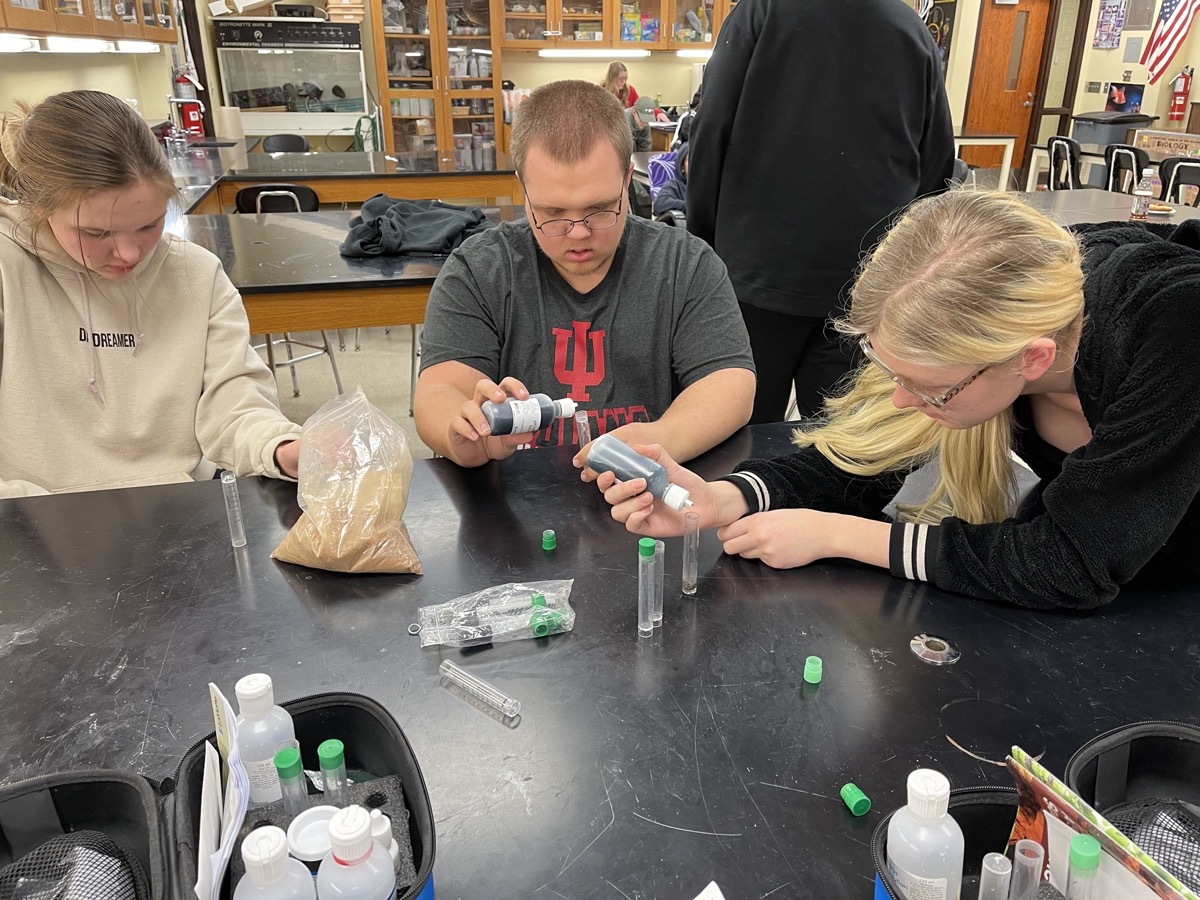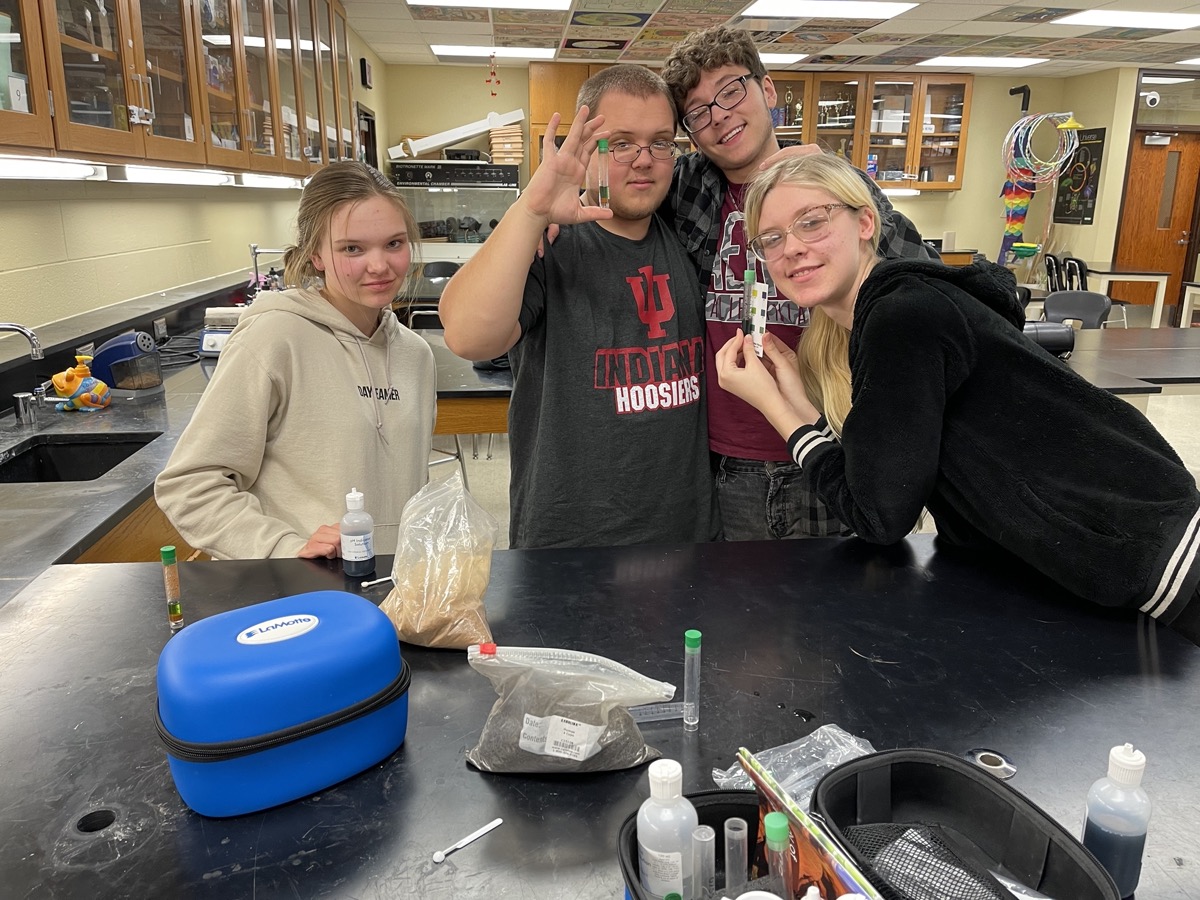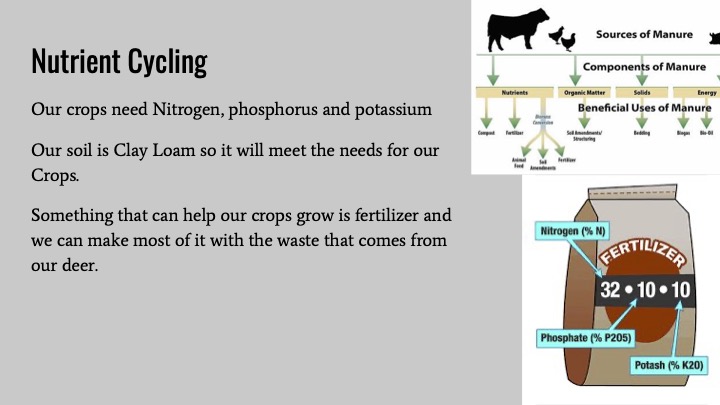Kathy Daniels’s students at Mississinewa High School tested soil samples. She did this lab with AP environmental and regular environmental science, using soil test kits provided through the Feed the World grant program sponsored by Ohio Corn & Wheat.


Taking the soil analysis farther, the students had to plan out a 500 acre farm with different soil types and topology. They had to find appropriate crops and animals they could raise on their farm as well. They did a soil study to figure out what nutrients they would need in the various areas, testing for pH, Potassium, Nitrogen, and Phosphorous, and also did soil slake and texture analysis.
Students’ presentations included information about their farm from a bird’s eye and a worm’s eye view:
- physical characteristics
- crop selection
- nutrient cycling
- soil food web
- economic impact
- social impact
- environmental impact
- anticipated pests
- water availability and sustainability
Groups came up with ideas such as a charcuterie farm and winery, a sheep and lavender operation, a jerky production, a bees and herbs operation, and more.
Here’s an example of the information included in the presentations.
